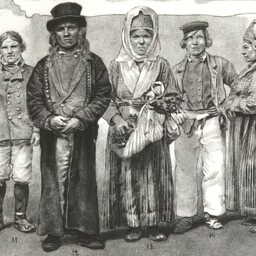Estonian researchers Andreas Kalkun and Kersti Lust studied the lives of unwed mothers. They found that in the 19th century, unwed mothers did not have it easy. According to church books and court documents, their children were often a source of shame. However, a different opinion has circulated in the media, claiming that unwed mothers were not burned in Estonian villages.
Earlier researchers claimed that unwed mothers were not burned. Kalkun and Lust, however, found that the fate of unwed mothers was bitter. They studied various sources, such as folklore, church books, and court documents. According to these, unwed mothers were often shamed, and their children were called derogatory names.
In folklore, unwed mothers were called derogatory names, such as 'whore' or 'slut.' Their children were called 'whore's children' or 'slut's children.' Christian culture also influenced language use, where children of unwed mothers were called 'children of shame.'
Unwed mothers were placed in the pillory at the church gate and beaten. Such punishments were abolished in the 18th century, but similar incidents still occurred in the 20th century. For example, in Kahala village, girls had to sit in front of the altar in church with unwed mothers, and they could be spat on.
In literature, the lives of unwed mothers have also been portrayed as sad. For example, in Juhan Liiv's work 'Shadow,' the unwed mother is tragic. Similarly, Helmi Mäelo describes in her works how unwed mothers and their children suffered.
The study also showed that unwed mothers had difficulty finding a husband. They often married older or poor men. Therefore, they often settled for widowers or discharged soldiers. Only after the death of their children did they often find a new spouse. The marriage prospects of unwed mothers were also poor until the 1890s.
In conclusion, the life of unwed mothers in Estonian villages was very difficult. They experienced shame and violence. This is reflected in several historical sources.

